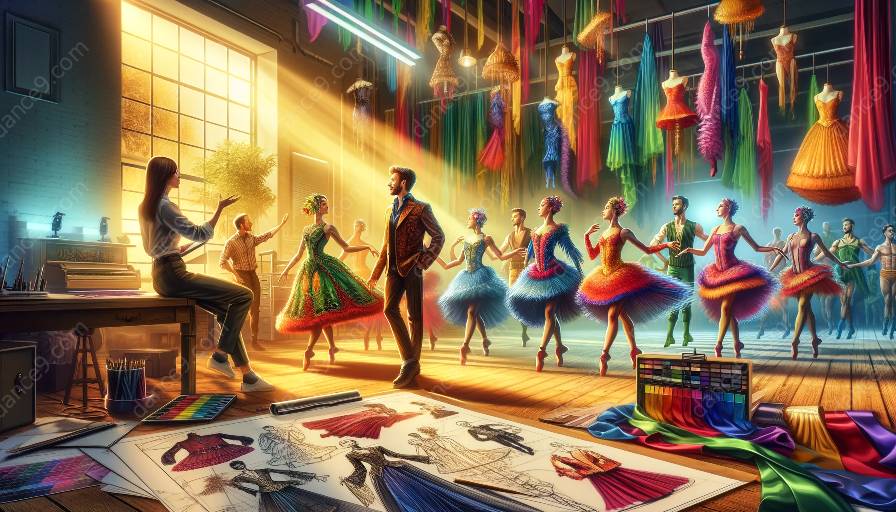Modern choreography has been significantly influenced by the widespread adoption and integration of technology. This transformation has not only revolutionized the way dance is created and performed but has also deeply impacted costume design. In this comprehensive discussion, we will explore the multifaceted role of technology in modern choreography and its connection to costume design, shedding light on the innovative tools and techniques that have redefined the art of dance.
The Evolution of Technology in Choreography
Technology has become an essential element in the choreographic process, offering new avenues for artistic expression and creativity. Choreographers are increasingly leveraging technological advancements to conceive and execute their choreographic visions. From motion capture and virtual reality to interactive projection mapping and programmable LED costumes, the possibilities for integrating technology into choreography are seemingly limitless.
Enhanced Artistic Expression
One of the most profound impacts of technology on modern choreography is the amplification of artistic expression. Through the use of digital tools and software, choreographers can manipulate movement, space, and time in ways previously unimaginable. This newfound freedom allows for the creation of intricate and abstract choreographic sequences that transcend traditional boundaries, captivating audiences with immersive and visually stunning performances.
Collaborations Across Disciplines
Furthermore, the intersection of technology and choreography has facilitated unprecedented collaborations across various artistic disciplines. Choreographers are collaborating with programmers, engineers, and designers to merge dance with cutting-edge technologies, resulting in groundbreaking performances that seamlessly integrate movement, light, sound, and costume design. These interdisciplinary partnerships have led to the development of interactive costumes embedded with sensors, responsive LED elements, and audiovisual effects, blurring the lines between choreography and costume design.
Technology-Driven Costume Design
Costume design, a vital component of choreography, has also undergone a remarkable transformation due to advancements in technology. Traditional costumes have evolved into dynamic, interactive ensembles that enhance the visual impact of dance performances. The integration of technology into costume design has not only enriched choreographic storytelling but has also elevated the overall aesthetic and sensory experience for both dancers and audiences.
Interactive and Adaptive Costumes
Modern choreographers and costume designers are embracing interactive and adaptive costumes that respond to movement, music, and environmental stimuli. Through the use of sensors, microcontrollers, and wearable technology, costumes can now dynamically change color, shape, and texture in real time, accentuating the emotional and narrative elements of choreography. These technologically enhanced costumes have transcended mere attire, becoming integral components of the choreographic narrative, breathing life into the performers' physical expressions.
Digital Fabrication and 3D Printing
Additionally, the advent of digital fabrication techniques and 3D printing has revolutionized the process of creating and crafting dance costumes. Designers now have the ability to produce intricate and bespoke costumes that were once inconceivable, allowing for a seamless fusion of form, function, and technological innovation. This shift towards digital fabrication has empowered choreographers and costume designers to envision and realize avant-garde costumes that complement and amplify the choreographic concepts they seek to convey.
Empowering Creativity and Innovation
Ultimately, the synergy between technology, choreography, and costume design is propelling the art of dance into new realms of creativity and innovation. The dynamic interplay between these interconnected disciplines has led to a renaissance in choreographic storytelling and visual aesthetics, transcending traditional notions of dance and costume design. As technology continues to advance, the boundless potential for choreographers and costume designers to push the boundaries of creativity and expression further solidifies the indispensable role of technology in shaping the future of dance.






































